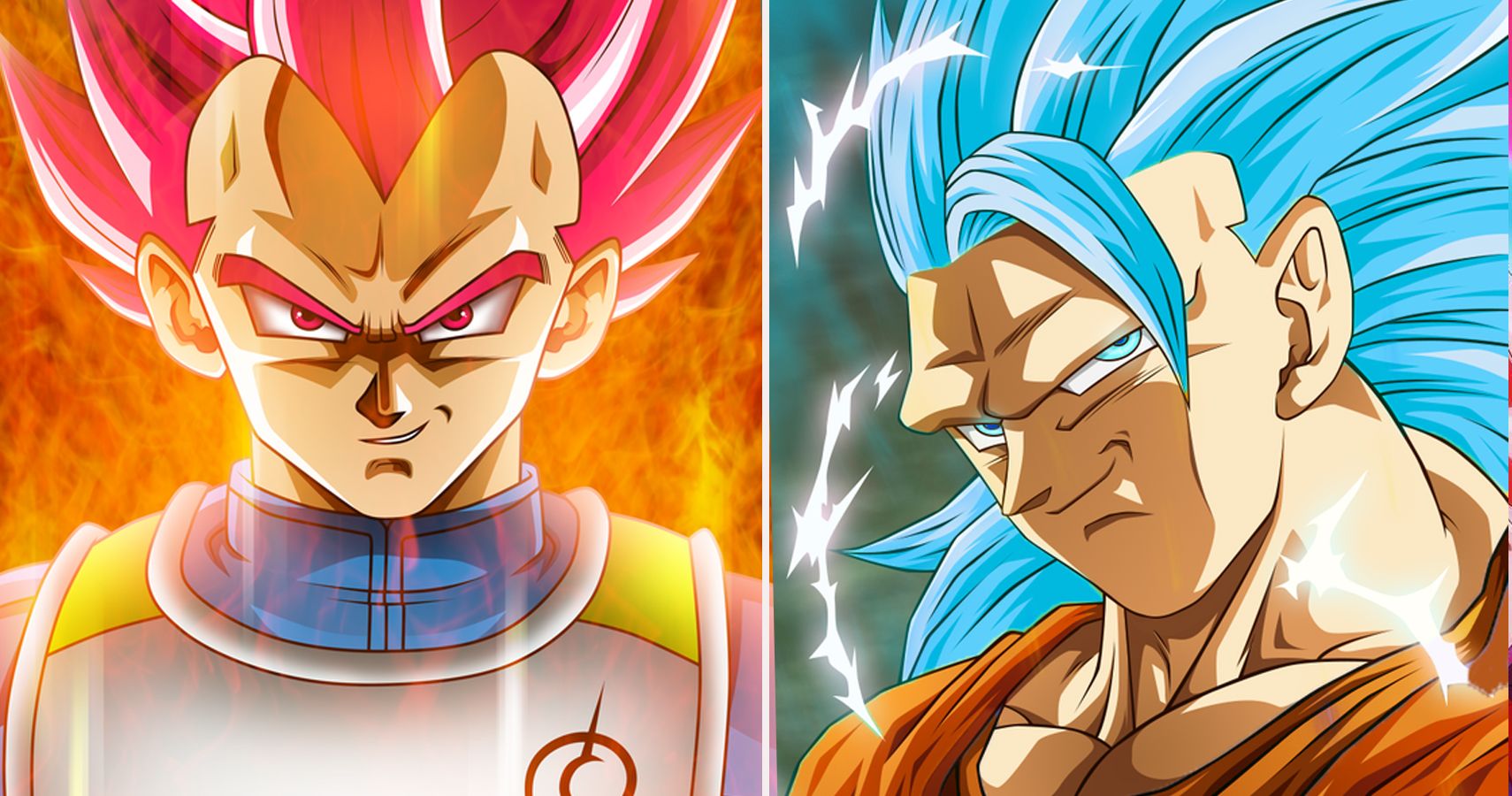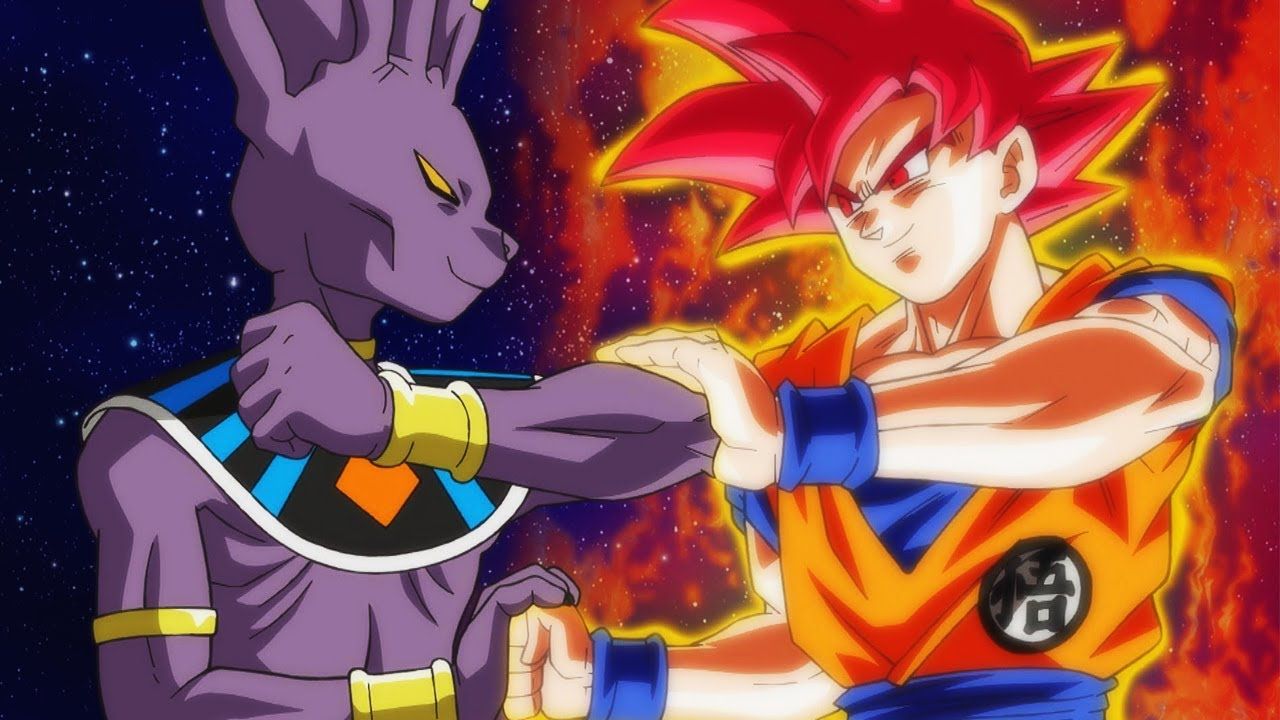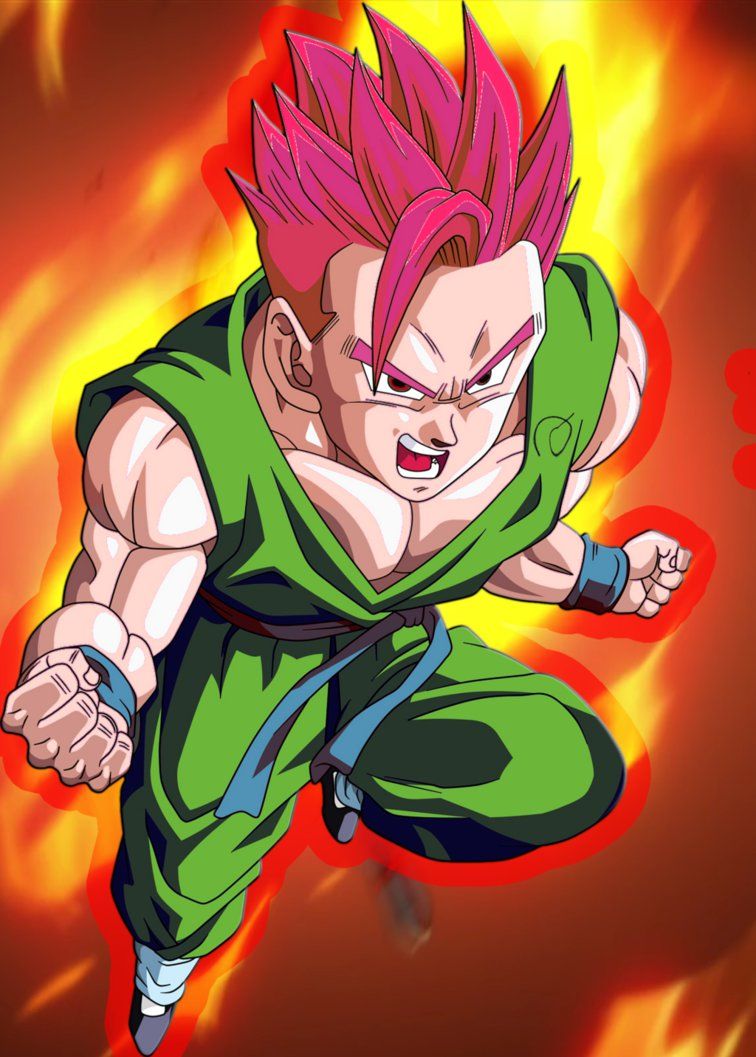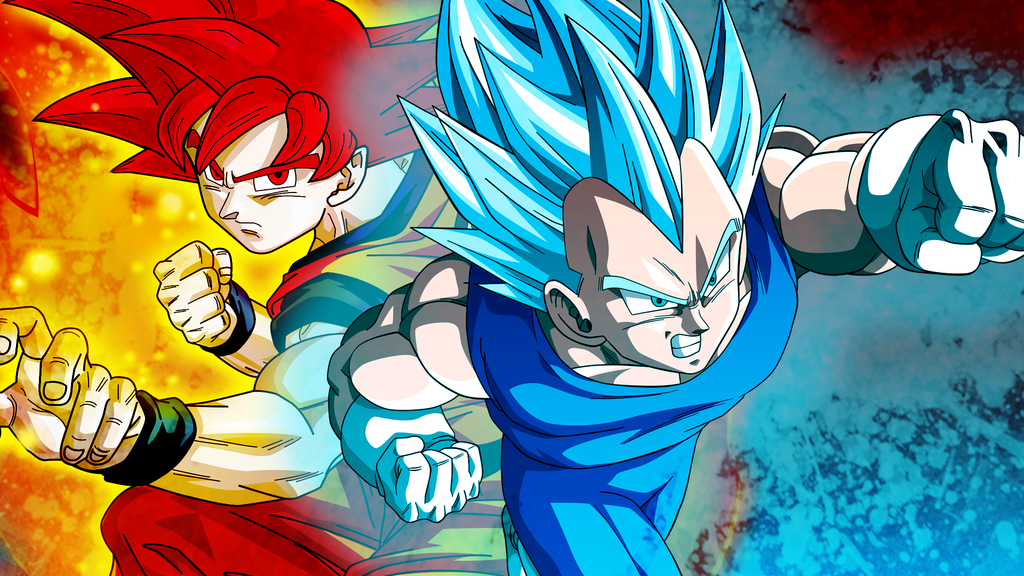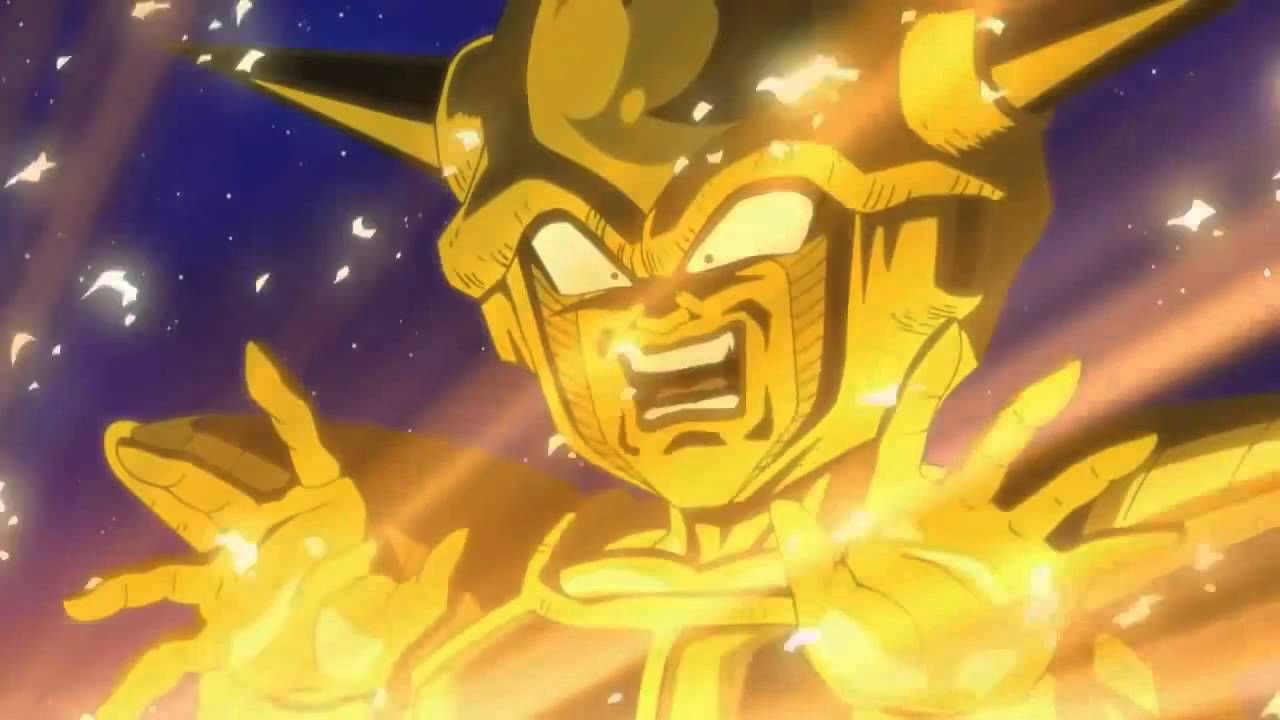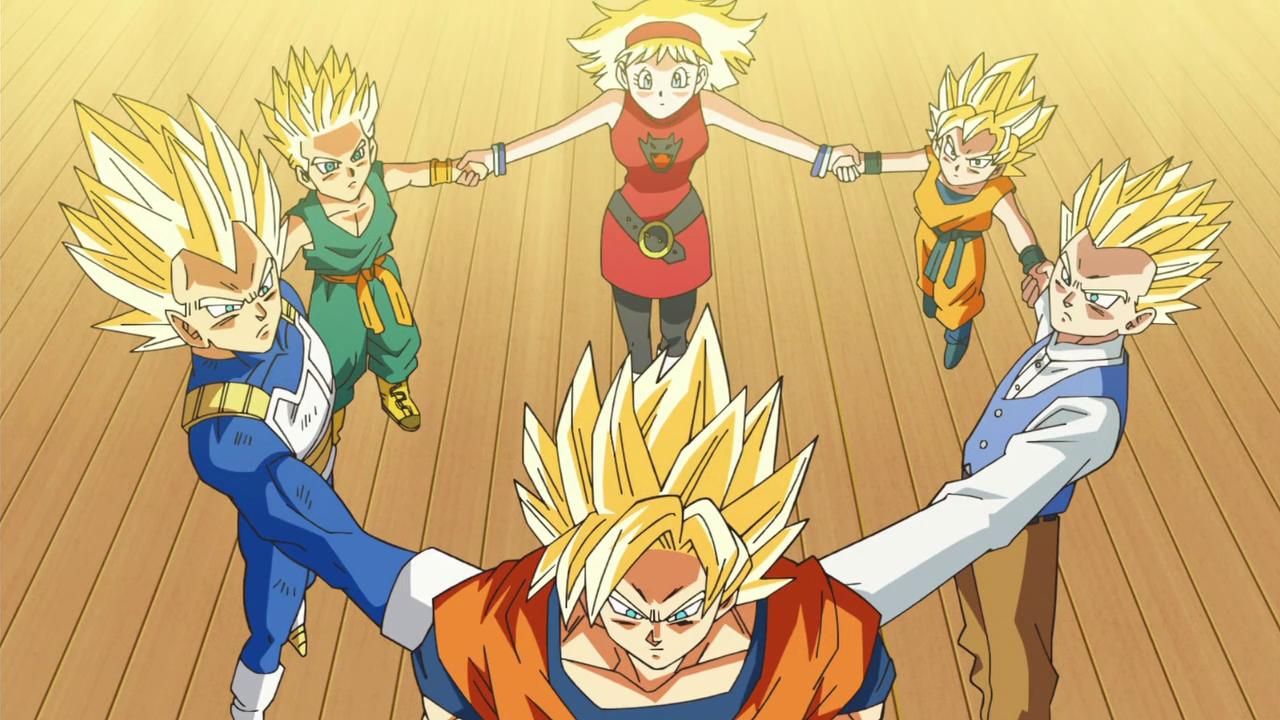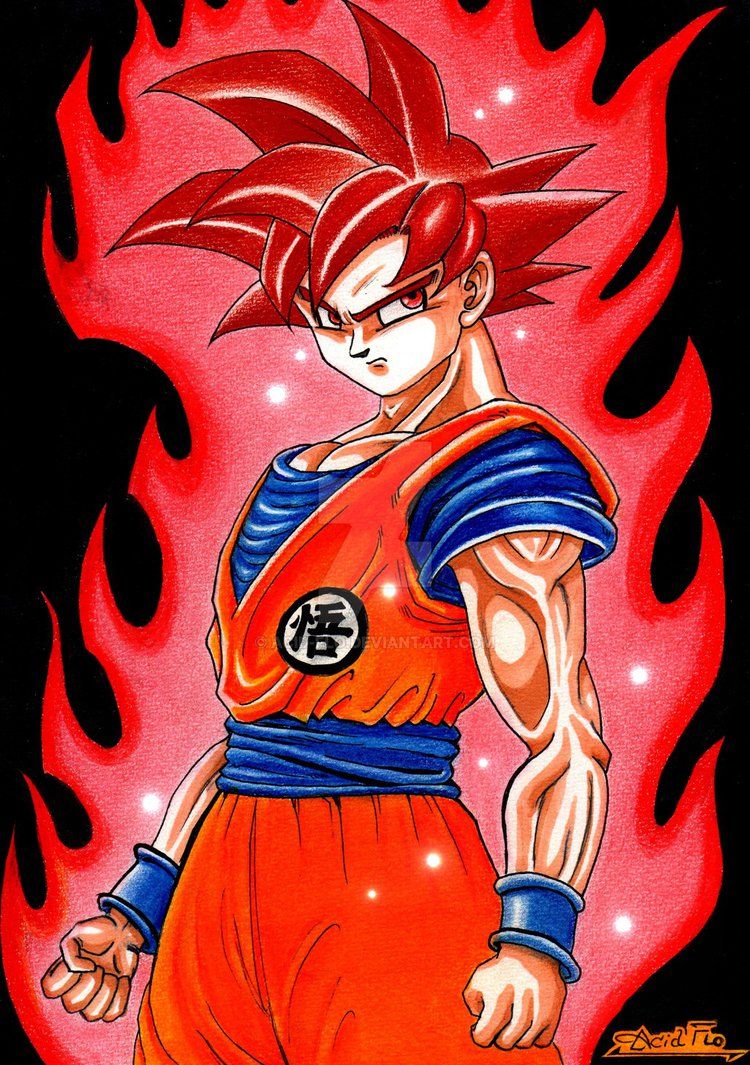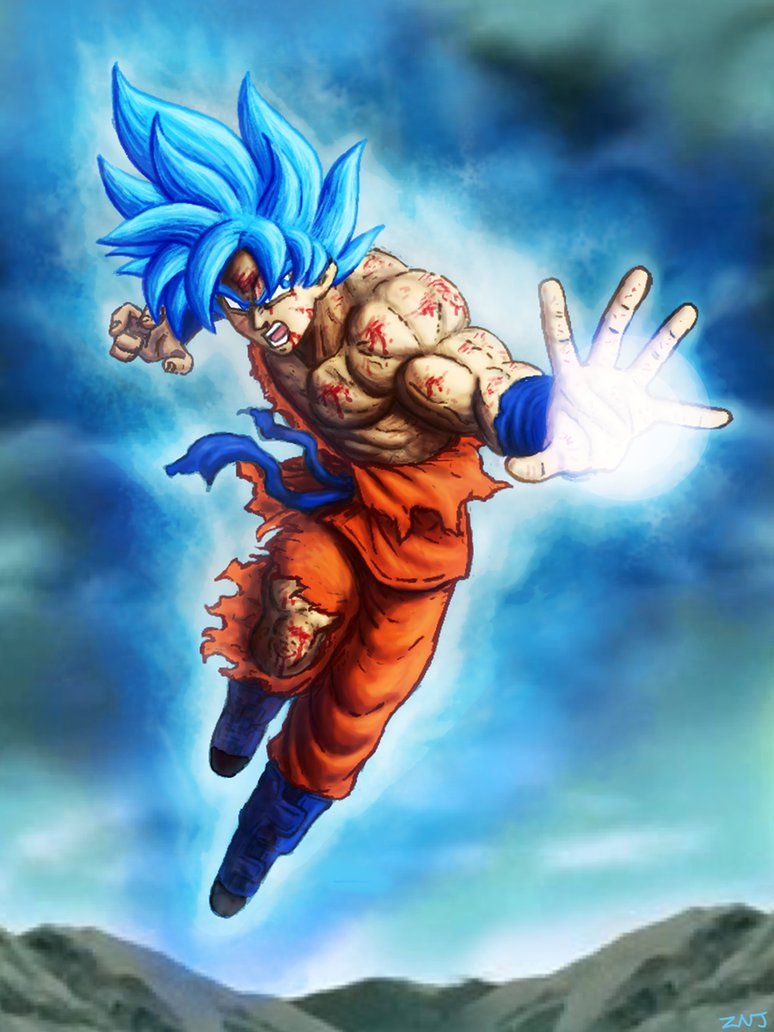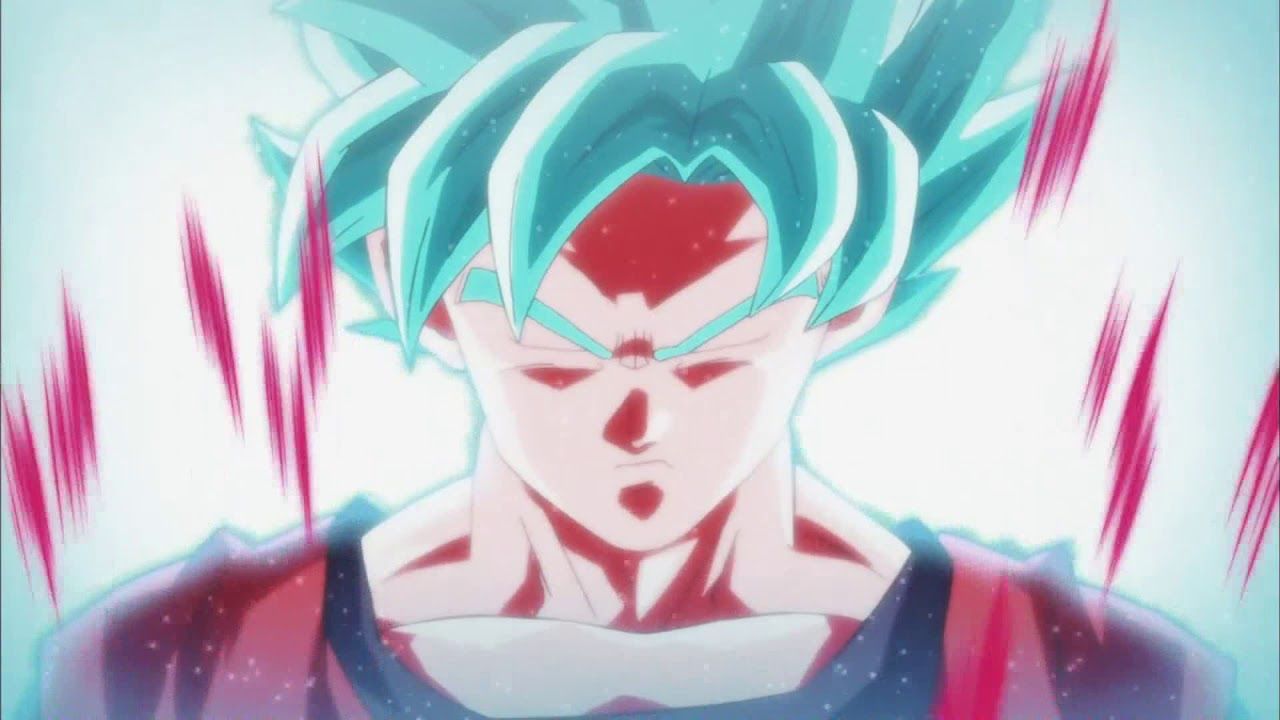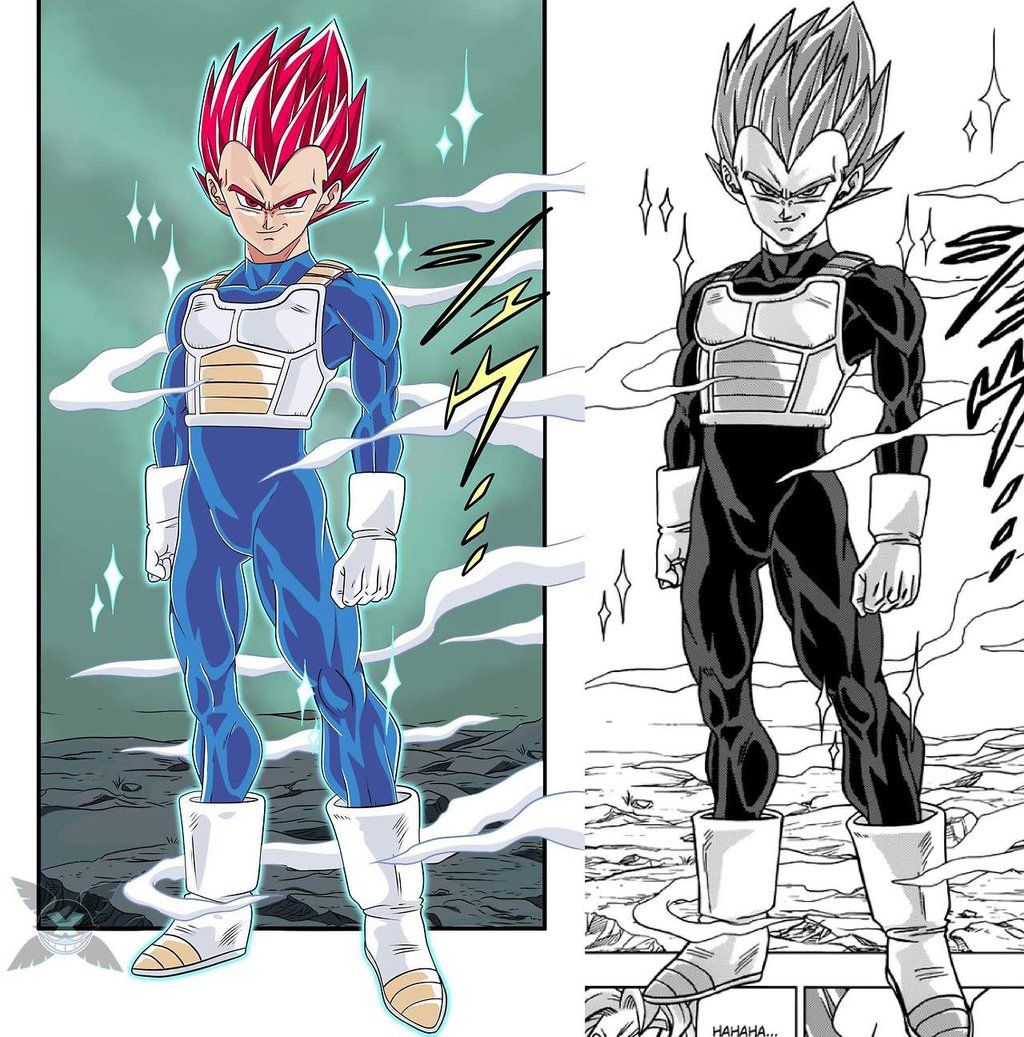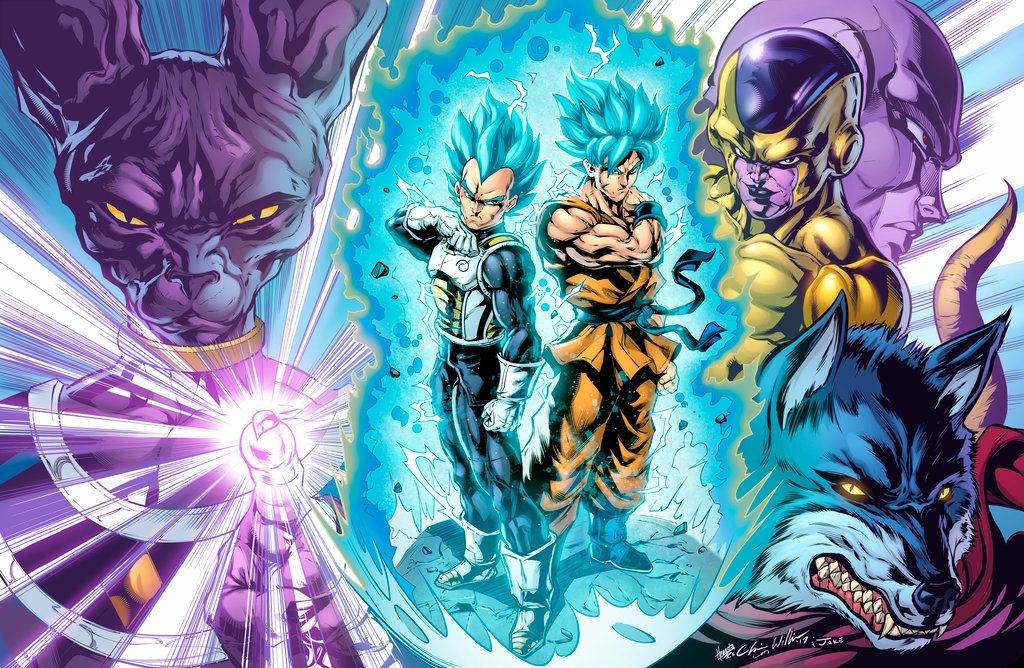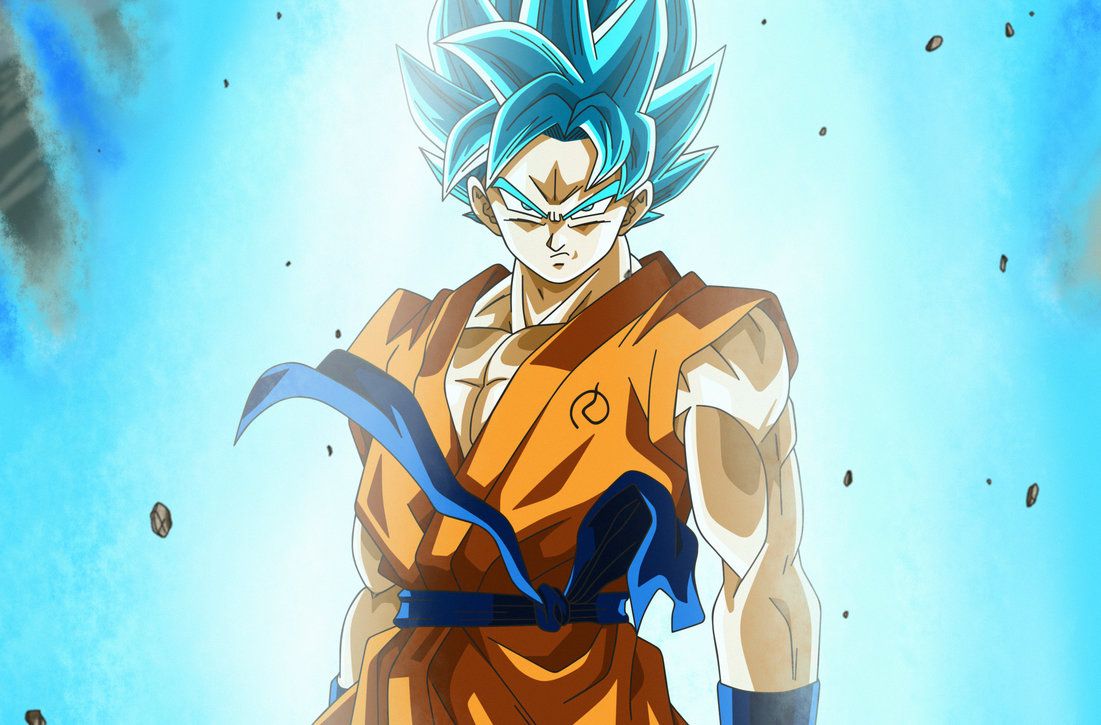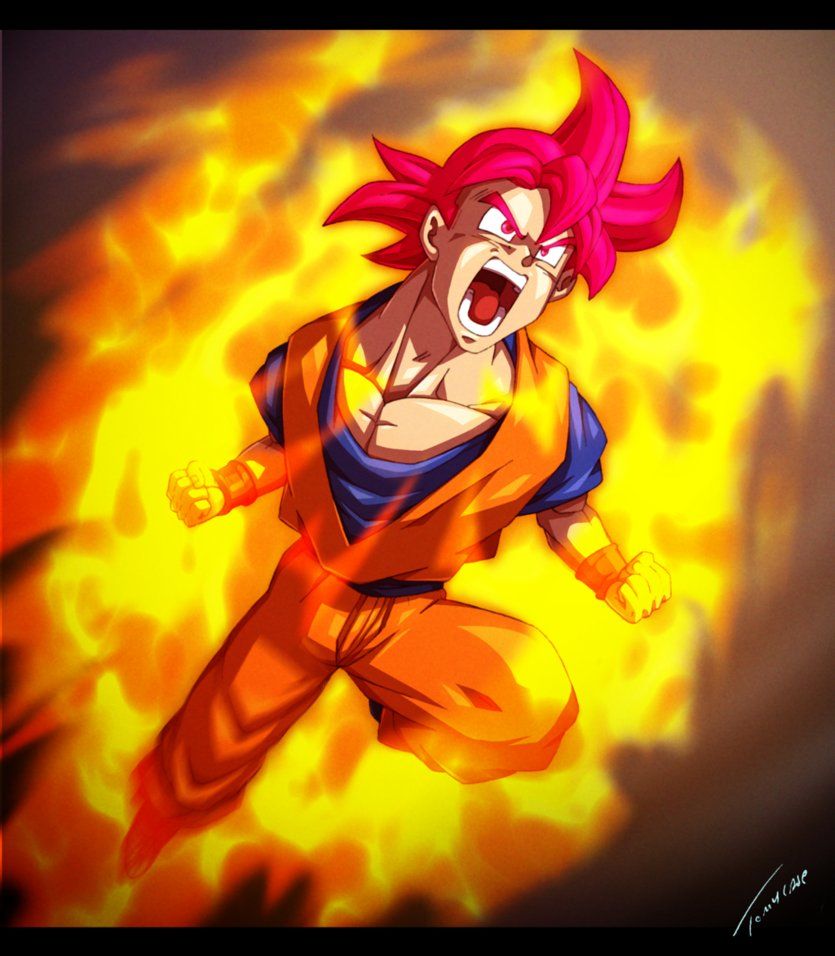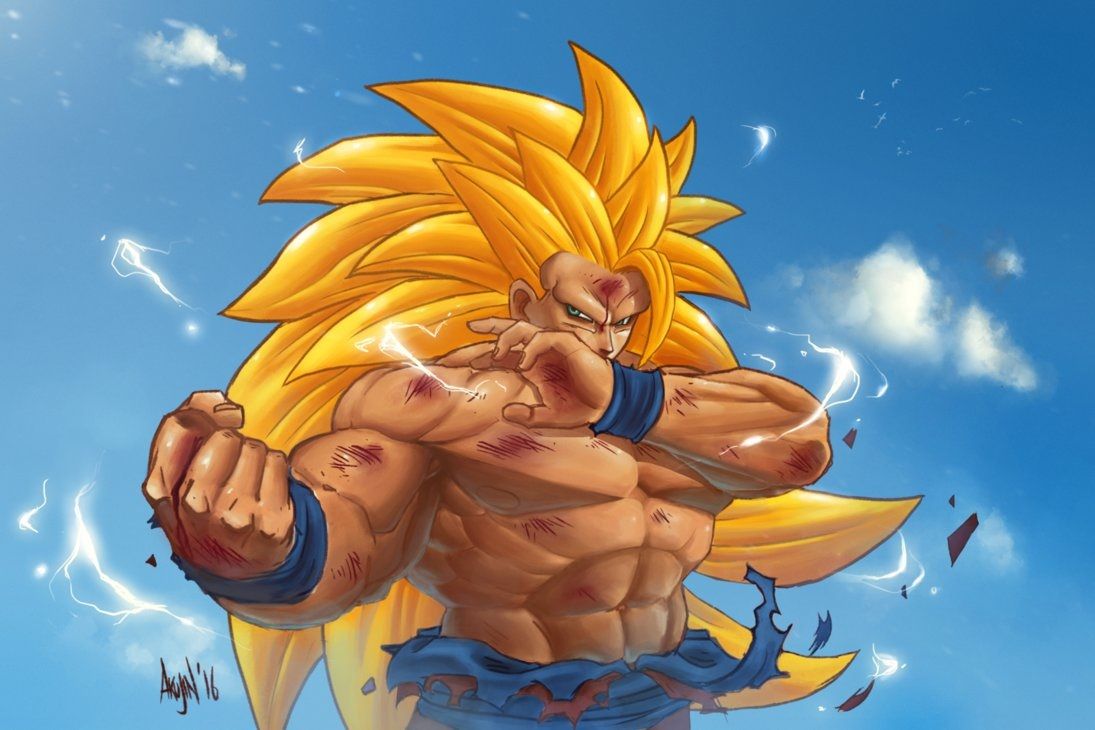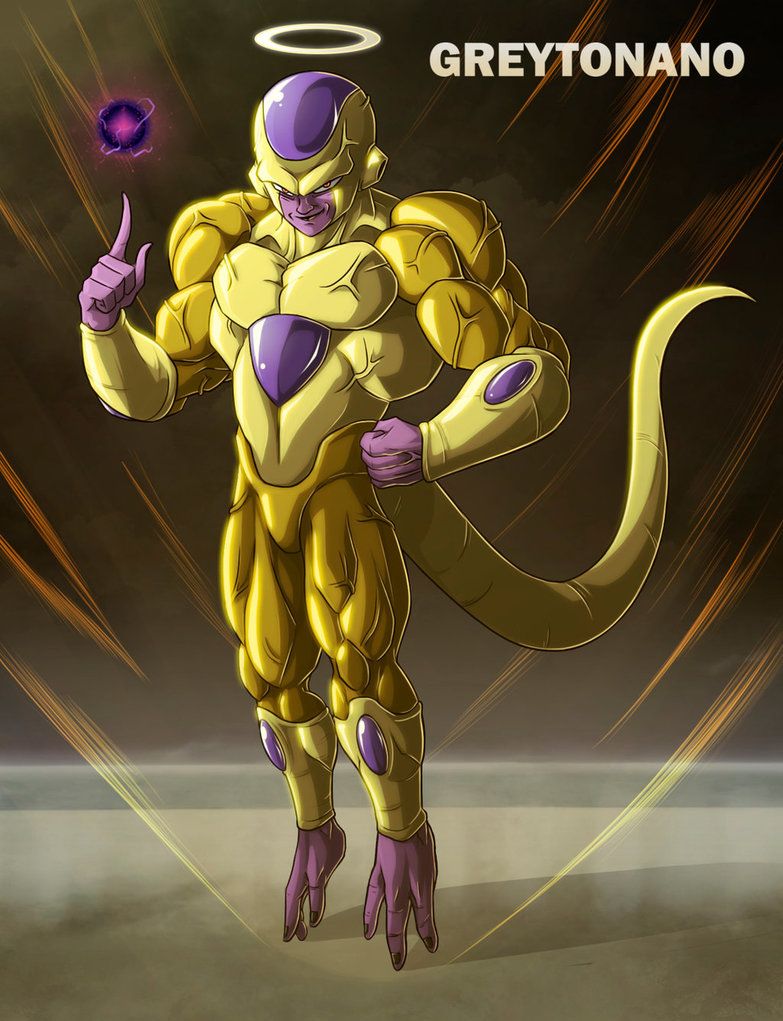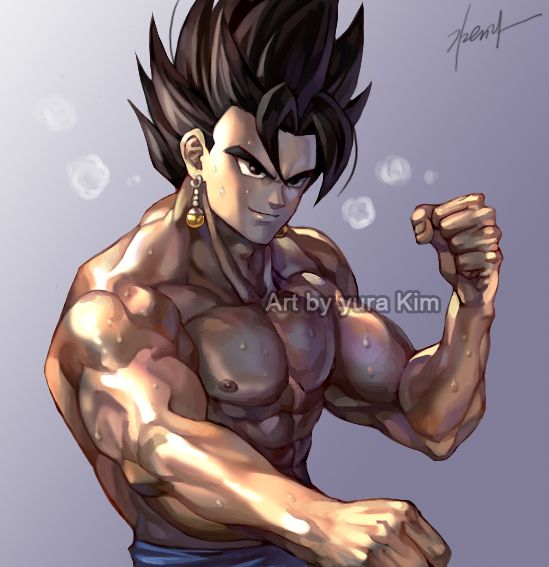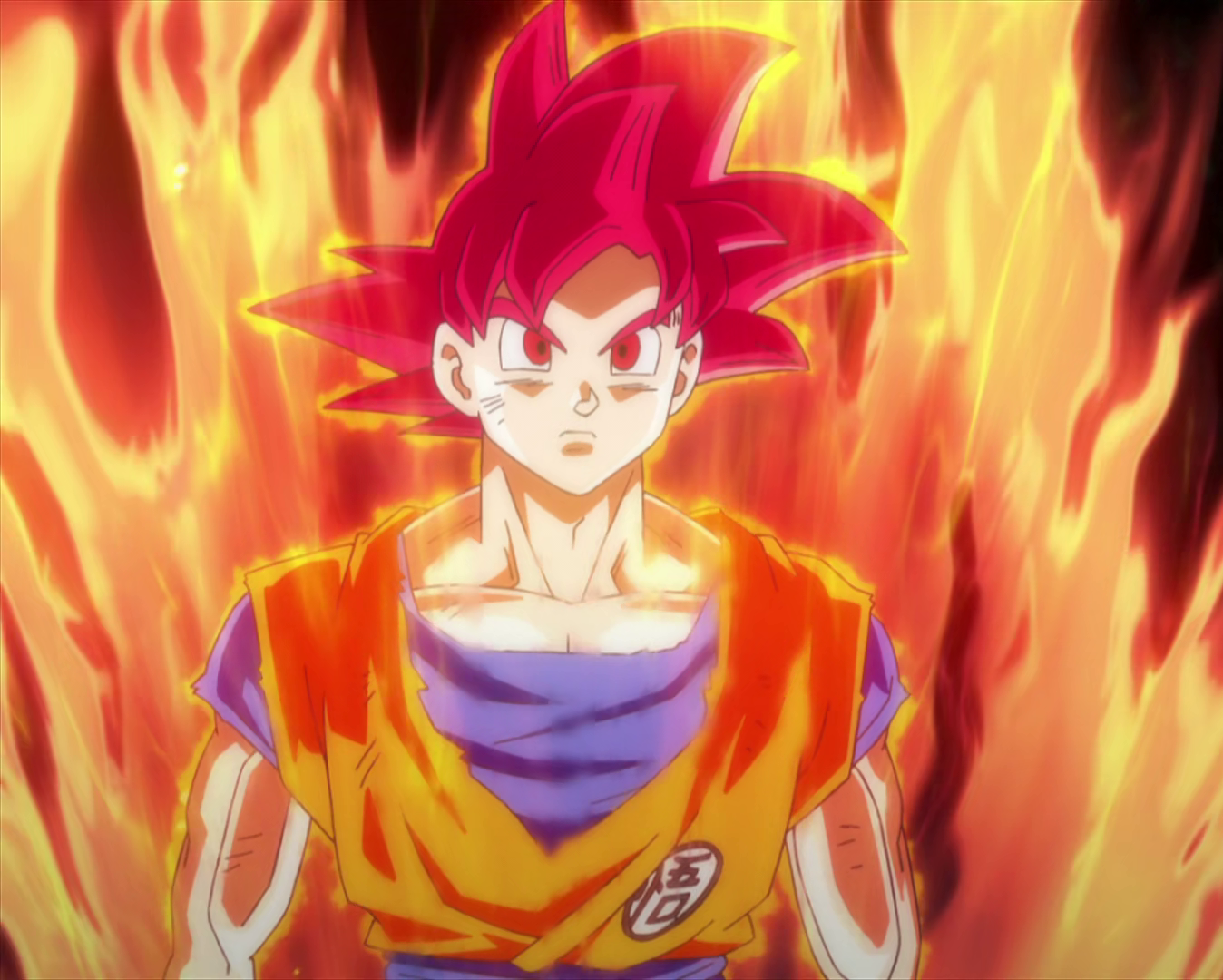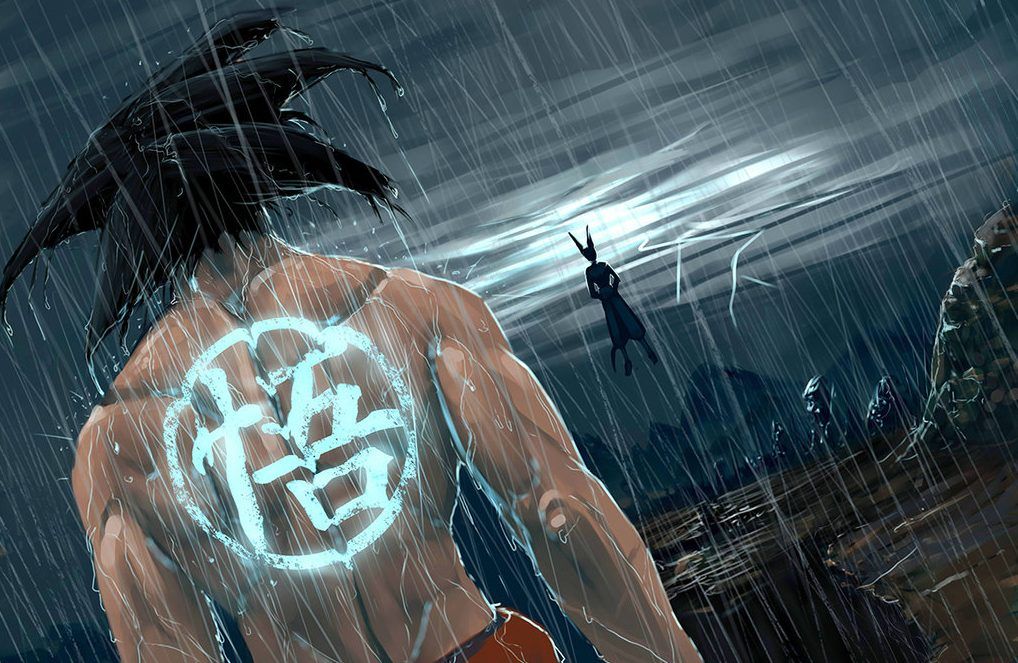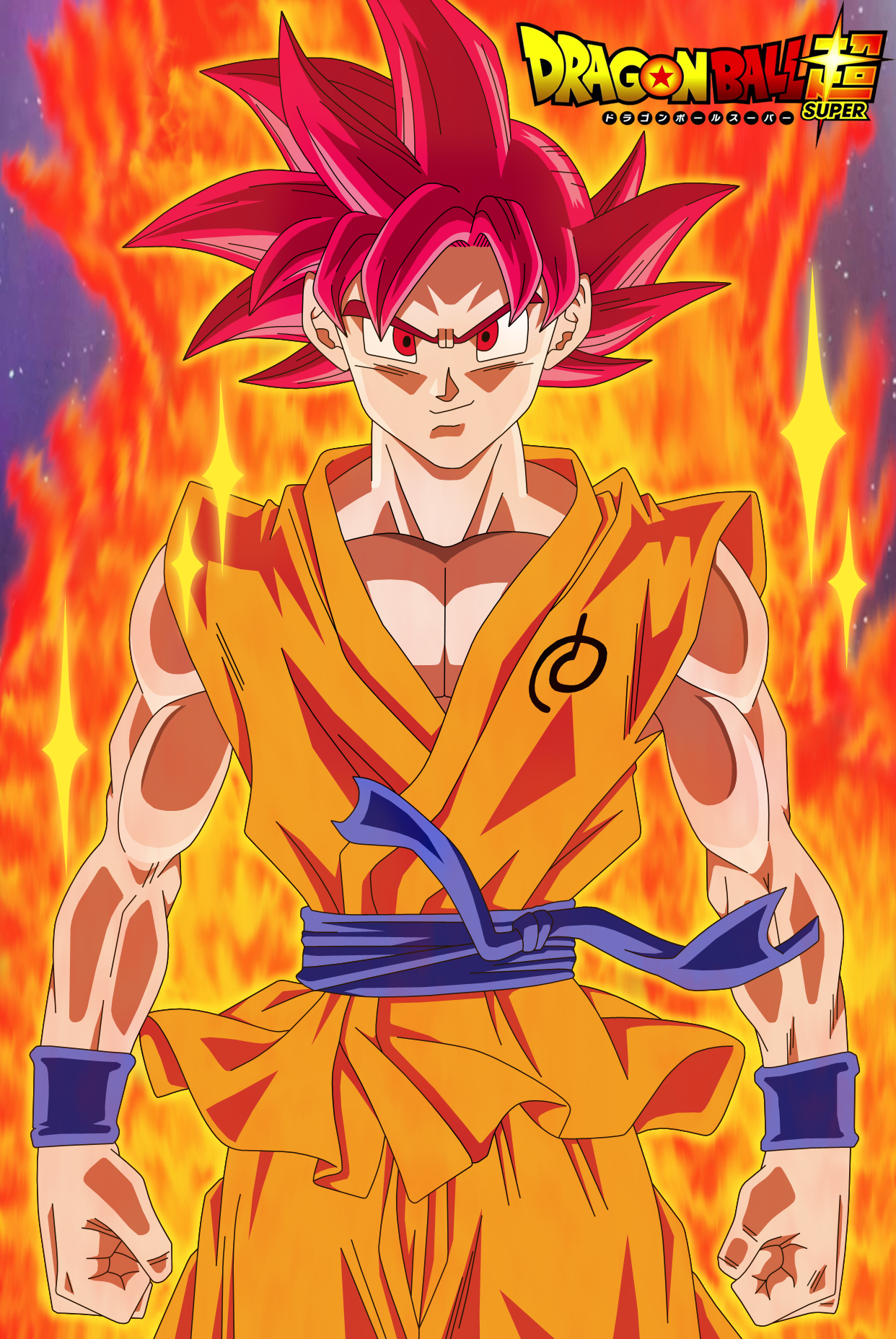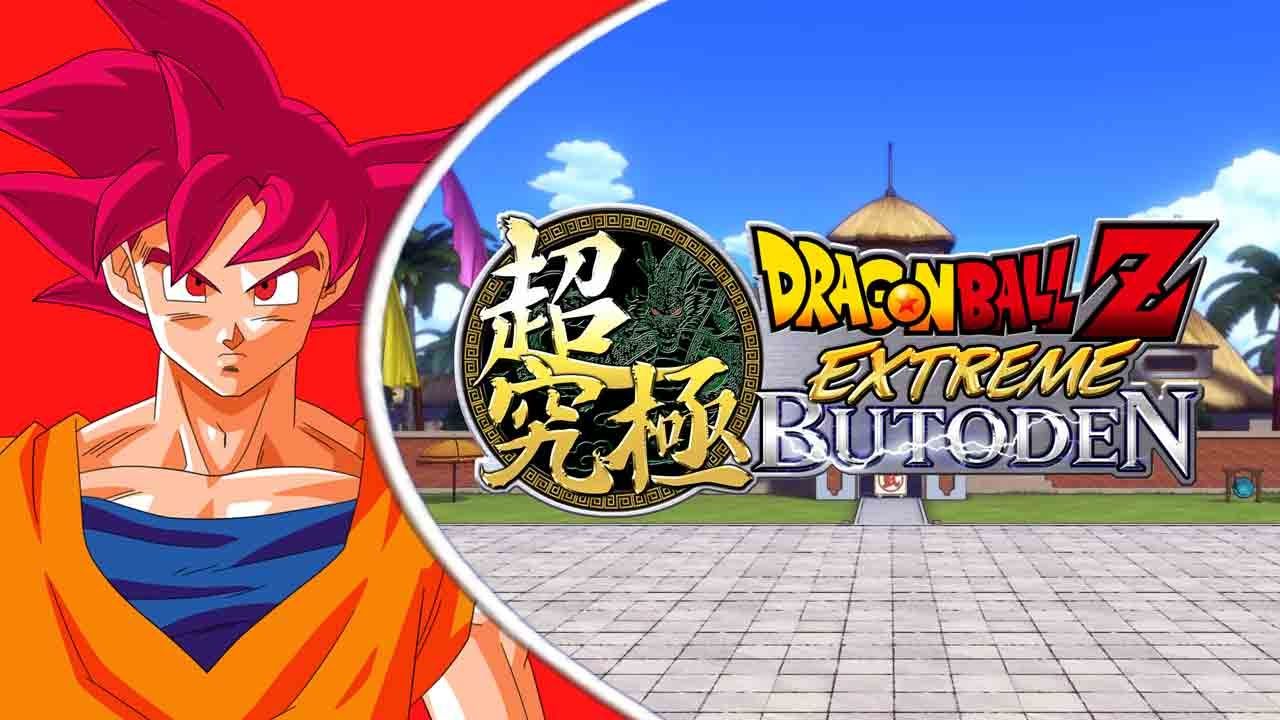The Super Saiyan God line may never end up as iconic as the original set of Super Saiyan transformations, but the red and blue forms have managed to gain a rather impressive fanbase. No, they don’t rival their golden haired counterparts, but they’ve nonetheless become synonymous with Dragon Ball. The franchise’s revival this past decade has done a lot to move the series forward. New gods, new universes, the return of Future Trunks, and Super Saiyan God have solidified Super as more than just a rehash of the original series. Regardless of your feelings on the quality of the series, you can’t deny just how different Super is. And let's face it: the proof is in the pudding, as millions of fans adore the new direction, and even those who don't love to discuss its pros and cons — Dragon Ball is back in the mainstream.
Why is Super so different, though? Super Saiyan God and Super Saiyan Blue are just recolors, aren’t they? In a way, yes, but they’re also innately different from what came before. Changing the color alone establishes a different tone for the series. With Super Saiyan God on its way to becoming one of the franchise’s staples, it’s only natural to ponder where it came from, how it came to be, and what exactly it is in the context of Dragon Ball. There is a lot of subtext about the form that some fans might not have picked up on. We're here to fix that.
25 Super Saiyan God Is About Half As Strong As Beerus
Back in the olden days of Dragon Ball’s revival, before Super came along and retconned Beerus into an even more powerful God of Destruction, Toriyama revealed an interesting tidbit about Super Saiyan God. If Goku is a 6 at the end of BoG, then Beerus is a 10. While this number gap doesn’t leave much room for Beerus to stay at the top of the totem pole if Goku’s going to continue getting stronger, it does make a lot of sense when looking at Battle of Gods as an alternative ending to the series.
With no stories left to tell, Goku triggering Super Saiyan God but still being at least 40% weaker than Beerus ends the series while emphasizing its most important theme: there’s always someone better. Even with the advent of literal divinity, Goku finds himself outclassed by a God of Destruction. He can improve, and it’s implied he will, but he won’t catch up to Beerus, at least narratively. The number gap is no longer relevant, but it’s a nice reminder of BoG’s themes.
24 Any Saiyan Could Theoretically Turn Super Saiyan God
It requires six pure of heart Saiyans to trigger the Super Saiyan God transformation: five to perform the ritual and one to accept the ritual’s benefits. Theoretically, given how purity is defined in Dragon Ball, just about any Saiyan can become a Super Saiyan God. This is the same series where Vegeta became a Super Saiyan by being pure evil. Purity is not a measure of one’s goodness but a measure of how “complete” their persona is. Even the cruelest of Saiyans could become a Super Saiyan God so long as they were pure in a cruel sense.
Even the cruelest of Saiyans could become a Super Saiyan God so long as they were pure in a cruel sense.
More important, the ritual means every main Saiyan in the series can benefit from the God ritual. Of course, it’s important to remember that one of Dragon Ball’s core principles is attaining strength through one’s own means, so giving everyone access to God Ki would seriously defeat one of the series’ core themes, but it wouldn’t be unrealistic for Gohan or Future Trunks to get an added bonus from a relatively easy to pull off ritual. Doing so would be useful, but it would hurt the series from a thematic sense.
23 Super Saiyan God Was Supposed To Permanently Replace The Super Saiyan Line
Despite the constant usage of the original Super Saiyan transformations in Super, arguably bordering on overuse, Toriyama originally envisioned of the future of Dragon Ball without the signature golden locks. Moving forward from Resurrection F, the plan was for Goku and Vegeta to make Super Saiyan Blue their main, and only, transformation. The concept came from a desire to simplify the very nature of transforming in the franchise. As the series progressed, forms like Super Saiyan 2 and 3 were introduced but lacked the same weight as the first form. In making Blue the primary form, it would obtain some of SSJ’s original weight. This didn’t pan out, of course, but it’s nonetheless an interesting idea that feels appropriately Toriyama.
22 Freeza Knew About The Transformation All Along
Freeza’s fear of the legendary Super Saiyan is one of those rare, poetic moments in Dragon Ball where the literary stars line up and lend themselves to a motivation so perfect, it manages to recontextualize an entire series without feeling like a blatant retcon. Which is a shame because Toriyama actually ended up retconning Freeza’s fear. Instead of annihilating Planet Vegeta to prevent the birth of the Super Saiyan, Dragon Ball Minus changes Freeza’s old motivation to a fear of the Super Saiyan God.
While not out of the realm of possibility, this feels like a change that serves only to hurt the franchise.
While not out of the realm of possibility, this feels like a change that serves only to hurt the franchise. Goku becoming a Super Saiyan to defeat Freeza was a moment of pure catharsis that had Freeza succumb fully to his fears. Adding the Super Saiyan God element takes away a lot of that catharsis since Freeza is no longer bested by his greatest fear. It ties into the series’ new lore, but at what cost?
21 The Two Base Theory
While it’ll likely never be confirmed or acknowledged by Toei, Toyotaro, or Toriyama, the Two Base Theory stands out as one of most creative concepts to come out of the fandom. With the introduction of God Ki, fans started to wonder how exactly it worked. Initially, it was believed that God Ki would supersede regular Ki, but Goku and Vegeta using their original Super Saiyan forms trump this notion. This means God Ki and regular Ki can exist alongside each other in one person.
The theory basically zones in on the idea that Goku and Vegeta have two bases: one for their regular Ki, where they can turn Super Saiyan; and one for their God Ki, where they can trigger SSG and Super Saiyan Blue. Two bases have no practical use, but they would allow for Goku to test his opponents comfortably, something he’s known for. The two base theory also helps explain the power scaling issues within Super. Goku’s struggling against someone weaker than him? He must be using his regular base!
20 Super Saiyan God Is The Most Underutilized Form In The Series
For as much fanfare Super Saiyan God got during the lead up to Battle of Gods, it ended up doing very little in Dragon Ball’s revival. Likely due to the rather quick introduction of Super Saiyan Blue, there was simply no place that made for SSG to make frequent appearances. If Goku and Vegeta have access to Super Saiyan as Gods, then why bother with the base God form? As a result, though, Super Saiyan God ends up the form used the least throughout the course of the series.
If Goku and Vegeta have access to Super Saiyan as Gods, then why bother with the base God form?
The original Super Saiyan is used quite often to this day; Super Saiyan 2 effectively replaced SSJ1 in the Buu saga; Super Saiyan 3 had its moments at the end of the series and throughout GT; Super Saiyan 4 was used against every villain in GT; and Super Saiyan Blue is Super’s version of SSJ1. Super Saiyan God, comparatively, gets next to no action.
19 The Stamina Predicament
If you just watch Dragon Ball Super, you’ll come to see Super Saiyan Blue as a form with perfect stamina. If you just read Dragon Ball Super, you’ll come to see Super Saiyan Blue as a form with perfect Ki control that uses quite a lot of stamina to trigger. What’s right? What’s wrong? What actually makes sense for the series? Honestly, they both make sense and they both don’t. For the anime, Super Saiyan Blue serves as the perfect state of the SSJ line. Stamina control was something Goku sought after in the Cell saga so it makes sense he’d only be complacent with a form that gave him complete control.
For the manga, Super Saiyan Blue emphasizes Ki control with the drawback of taking a lot of stamina to trigger. This keeps SSB’s edge over other forms, but gives it a downside. Transforming in and out of it takes a serious toll on the body meaning Goku and Vegeta have to be smart when transforming. It also paves the way for Toyotaro improving the form with the Mastered state, allowing for a sense of progression. Neither is right, neither is wrong, and we’ll likely never know which is more canon.
18 Super Saiyan God Makes A Lot Of Sense As A Final Form
For a second, imagine that Dragon Ball did indeed end with Battle of Gods. Goku is the strongest hero, but not the strongest character; Beerus exists as the living embodiment of overcoming one’s limits; and Super Saiyan God directly parallels Kaioken, the technique often considered to be Goku’s first transformation. Both are red forms, but they’re inherently different in execution. Kaioken stresses the body and buffs it for added power, but Super Saiyan God slims the user down and offers them a divine strength without compromising their body. More importantly, Goku accepting the ritual’s power goes back to him denying the role of God of Earth at the end of the 23rd Budokai. In many ways, it brings Goku’s life full circle.
17 Vegeta Can Use Super Saiyan God In The Manga
One of the biggest changes between the anime and manga, by far, has to be Vegeta’s ability to use Super Saiyan God in the manga. In the anime, it’s heavily implied that Vegeta skipped over Super Saiyan God and developed God Ki on his own by living amongst Whis and Beerus for half a year. Since the manga skips Resurrection F, and any training associated with God Ki as a result, Vegeta’s relationship with Super Saiyan God is consequently left vague. Come the Goku Black arc, though, and it’s been confirmed that Vegeta did indeed attain SSG in the manga continuity.
While inconsequential to the overall narrative, this is a pretty big change with some interesting implications. Either Vegeta underwent the ritual in-between Battle of Gods and Resurrection F, or the ritual actually isn’t necessary for the transformation. This means any Saiyan can unlock the form by simply immersing themselves in a setting filled with God ki.
16 What The Heck Is Super Saiyan God Super Saiyan?
Pretty much everyone nowadays, in-universe and out, refers to Goku and Vegeta’s blue form as “Super Saiyan Blue.” Whis nicknames the form thus early in the anime’s run, and it sticks for the rest of the series. Unless you’ve kept up with the most recent games, you’ve likely forgotten that Super Saiyan Blue began life as “Super Saiyan God Super Saiyan.” A confusing, mouthful of a name that feels more like a parody than anything, the term has managed to survive outside the anime, manga, and fandom.
A Super Saiyan God Super Saiyan is simply a Super Saiyan God triggering the Super Saiyan transformation creating a mix of God and Super Saiyan Ki.
Since “Super Saiyan God Super Saiyan” is still the official name of the form, even if unused, it’s likely the games are obligated to use it for prosperity’s sake. After all, it’s not like the name is incorrect in any way. A Super Saiyan God Super Saiyan is simply a Super Saiyan God triggering the Super Saiyan transformation creating a mix of God and Super Saiyan Ki. Convoluted? Yes. Unfortunately official until the inevitable end of the universe? Also, yes.
15 The Super Saiyan Red To Super Saiyan Blue
It seems almost unfair that Super Saiyan God Super Saiyan gets to be nicknamed Super Saiyan Blue while Super Saiyan God doesn’t get to have a cool, color related alternate… until you read the manga! During the Universe 6 tournament, Goten calls SSG “Super Saiyan Red.” Trunks quickly comments on this and tells him it’s just “Super Saiyan God,” but it’s nonetheless a nice name drop that legitimizes the term “Super Saiyan Red” to some extent.” SSG doesn’t need a nickname like SSGSS, obviously, but the cohesion certainly ties the God forms together, especially when considering Goku Black’s Rose form.
14 A Super Saiyan God Does Not Defeat A Single Character
Across every series of Dragon Ball, there does not exist a single transformation with as bad a track record as Super Saiyan God. Even in its backstory, the original Super Saiyan God ends up inevitably losing. Between Goku and Vegeta, Super Saiyan God gets virtually nothing done in Dragon Ball Super. It has some great fights, which is arguably more important, but it doesn’t have a single win attached to its name. Considering the series’ future seems to lie in the hands of Ultra Instinct, it’s unlikely Super Saiyan God will ever get a chance to redeem itself and secure a victory.
13 Super Saiyan God Was Not The First Subversive Form
Super Saiyan God stands out from other transformations in the series thanks to the massive hype it got all leading up to Goku losing. As far as Super Saiyan forms go, it’s one of the most unique in that regard alone. Except, it’s really not. While Super Saiyan God is certainly subversive and deserves praise for being so, it wasn’t the first subversive form. Super Saiyan 3 was. Whether intentional or not, SSJ3 played virtually the same role in the Buu arc that SSG did for Battle of Gods. It’s hyped up, it’s ferociously powerful, but it still can’t defeat the arc villain. Super Saiyan God stands out more for explicitly tying the loss into one of the series’ core themes, but SSJ3 still deserves recognition for its subversive nature.
12 Freeza Is Naturally Stronger Than The Average Super Saiyan God
With Dragon Ball Minus effectively rewriting Freeza’s motivation in the original series, his massive gains from training during Resurrection F take on a new meaning. Not only is Freeza inherently stronger than the average Super Saiyan, his natural talent puts him above that of a Super Saiyan God. Since it’s just a furthering of one of Resurrection F’s core themes, it’s not particularly impressive from a thematic or narrative standpoint, but it’s perhaps the only consequence of the Minus retcon that doesn’t feel like a complete detriment to the series. If Freeza’s going to be afraid of Super Saiyan Gods, he may as well have the natural power to defeat one, keeping his loss on Namek at least somewhat poetic from a Dragon Ball Super perspective.
11 Trunks’ God Form Probably Wasn’t In Toriyama’s Outline
Toriyama’s outline is an interesting beast shrouded in myth that we’ll likely never get a chance to read. It dictates the course Dragon Ball Super takes, but it’s incredibly difficult to piece together what is and isn’t included in the outline. The only reliable way of determining outlined information is to follow the golden rule: if it happens in both the anime and the manga, it’s probably in the outline. Which, unfortunately, means Future Trunks’ new form at the end of the Goku Black arc was not a Toriyama creation.
It’s likely all Toriyama wrote in his outline boiled down to “Trunks gets a new power.”
Where Trunks gets a new God related form at the end of the anime, the manga has him become a Kaioshin apprentice and play a supporting role in the final battle. Since both approaches are so wildly different, it’s likely all Toriyama wrote in his outline boiled down to “Trunks gets a new power.” Toei went the traditional transformation approach, while Toyotaro kept things a bit more grounded and gave Trunks something unique.
10 Super Saiyan God Gives A Bigger Boost Than Fusion
Vegetto’s legacy is one that only suffers the more Super introduces new forms and villains. Although his bout against Zamasu stands out as perhaps the most disrespectful moment for the fusion, Toriyama did establish Vegetto as a benchmark to overcome as early as Battle of Gods. While debating how to handle Beerus, Goku states that not even Vegetto would be able to handle the God of Destruction. Keep in mind, Vegetto was the single strongest character in the original series to the point where nobody else came reasonably close in power.
Logic dictates, with a small ritual. Goku was able to close a gap narratively defined by its seemingly infinite span, putting Super Saiyan God above the very concept of fusion. At its core, this is truly one of the few double edged narrative swords in the franchise. On one hand, Super Saiyan God is an inspired form that pushes one of the series’ core themes. On the other, it takes away from the very concept of Vegetto, a culmination of the series’ most important rivalry.
9 Super Saiyan God Aesthetically Represents Toriyama’s Desire For The Franchise
Super Saiyan God may not be the buff, golden haired form everyone was expecting, but that honestly makes it all the better. Whether you like it or not, Super Saiyan God is an inherently unique form, and aesthetically signifies a shift for the series. It has no interest in rehashing what’s been done so it simply doesn’t. With this form, Toriyama is straying away from the Super Saiyan line’s standard form and establishing a new course of action. Instead of intricate hair designs and lightning bolts, transformations will be defined by colors. It may not be the most original idea, which works all too well with Super’s MO, but it does keep SSG, Super Saiyan Blue, and both version of Ultra Instinct from looking too derivative to what came before.
8 The Super Saiyan God Prophecy Makes No Sense
With such a classic approach to storytelling, especially in regards to its divine elements, it was only natural Dragon Ball would tackle a legitimate prophecy sooner or later. 39 years from when Planet Vegeta gets destroyed, Beerus will meet and fight a Super Saiyan God. In the context of Battle of Gods, it’s a simply prophecy that makes enough sense and ties Goku to Beerus in an intimate fashion. When you take a step back and look at how the franchise handles time, though, it starts to fall apart.
The prophecy can only make sense if the alternate timeline existed alongside the original timeline the entire time
Dragon Ball doesn’t take place in the original timeline, but the timelines don’t split until the start of the Cell saga which means the prophecy is still foretold in Trunks’ timeline, the prime timeline, even though it realistically cannot occur. The prophecy can only make sense if the alternate timeline existed alongside the original timeline the entire time, but it’s created only when Trunks travels back to it. The prophecy simply cannot work with Dragon Ball’s approach to time travel and multiverse theory.
7 The Inconsistencies Of Super Saiyan God
Is it a transformation? Did Goku absorb it? Do you need to do the ritual to trigger it? Can you unlock by just being around God Ki? Do you need it to become Super Saiyan Blue? These are all incredibly important questions that go unanswered in every single Dragon Ball Super related medium: the films, the anime, the manga, and the Resurrection F promotional manga all fail to establish what Super Saiyan God’s role is.
The film and promo manga imply it’s just an inherently absorbed power; the anime made it seem like you didn’t need the ritual to trigger it and that it wasn’t a transformation before its reintroduction in the Tournament of Power; and the manga just straight up makes it a new form. Without a single consistency to ground it the series’ canon, Super Saiyan God is easily Dragon Ball’s most confusing form.
6 “Legendary Super Saiyan” Is Another Title For Super Saiyan God
Sometimes lore comes from the strangest of places. In Extreme Butoden, and only Extreme Butoden, it’s revealed that the term “Legendary Super Saiyan” also refers to “Super Saiyan God.” At first glance, this really means absolutely nothing since most people are just going to call SSG by its proper name. When you take a second to think about it, however, it does fix a minor issue with Freeza. By making “Legendary Super Saiyan” a catch all for SSG, his Dragon Ball Minus retcon manages to stand with a bit more weight. It’s not ideal and it doesn’t fix the inherent issues with changing his motivation, but it does allow it to make a bit more sense. Thanks, Extreme Butoden!

